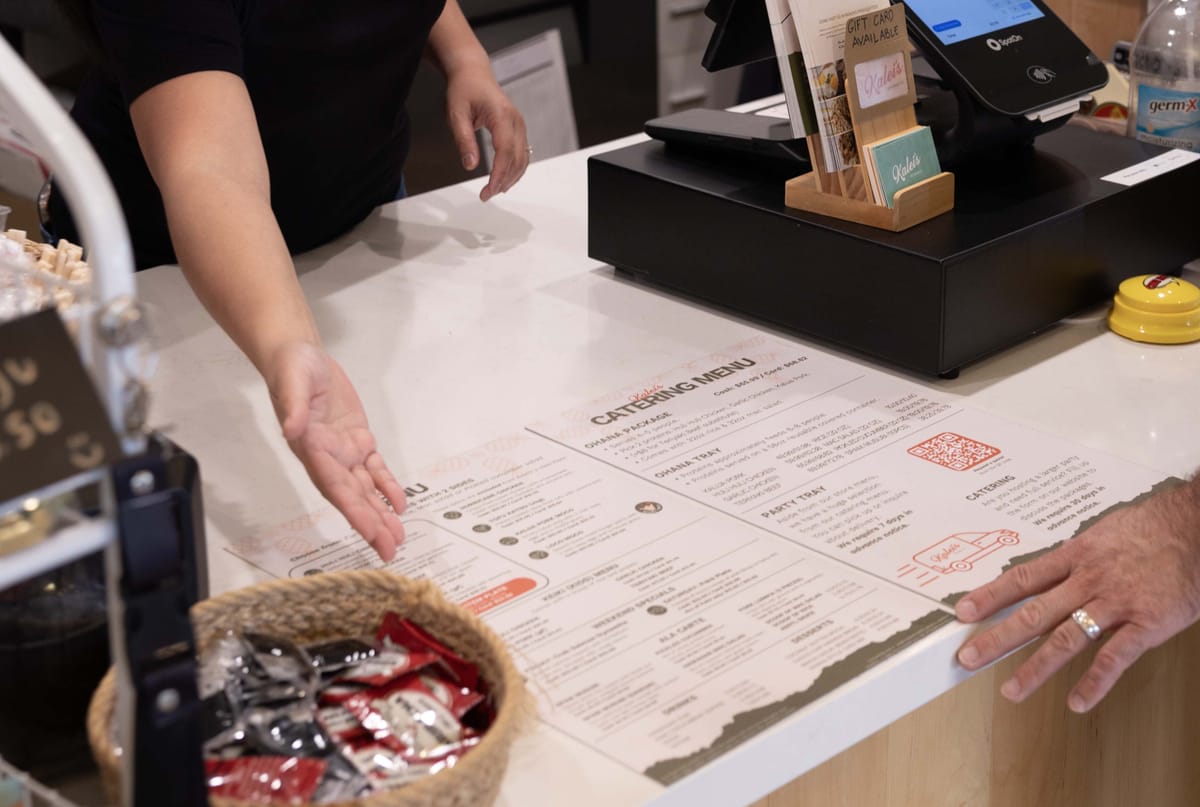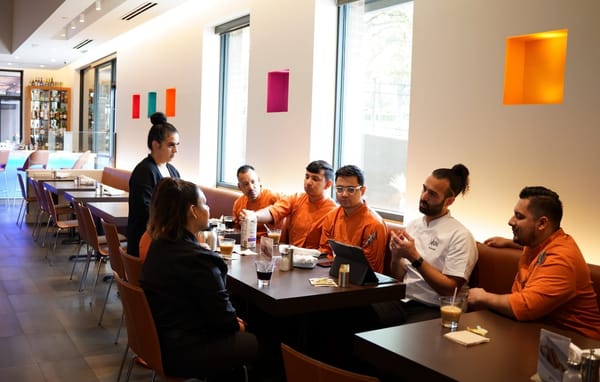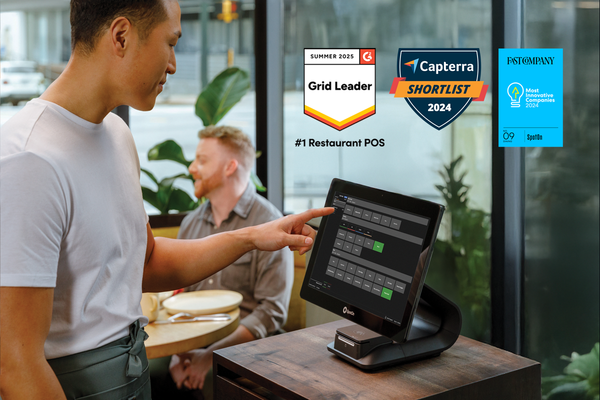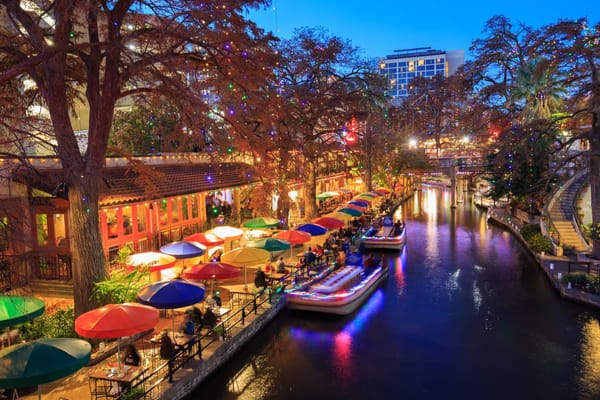Your restaurant menu defines your restaurant. But it’s not set in stone—it’s a living document that reflects your restaurant’s personality and evolution. It should always align with your restaurant's identity to ensure consistency across all aspects of your business. It's also an important tool for maximizing profitability, with your menu updates and branding efforts lining up with your restaurant's business goals and overall strategy.

Whether you’re planning a menu for a new restaurant opening or refreshing the menu for an existing concept, there are multiple factors consider. Let’s break it down into three parts:
For each part, we’ll dive into practical best practices
Part 1: Plan & create a menu for profitability
About the author
Scott is a Restaurateur in Residence at SpotOn, bringing decades of hospitality experience to help restaurants streamline their operations and boost profits with the right technology.
You didn’t get into this business because you love spreadsheets. You got into it because you love food, you love hospitality, and you’re probably addicted to the rush of a packed dinner service.
But here is the hard truth that keeps so many of us up at night: Passion doesn’t pay the rent.
Your menu is more than just a list of dishes. It's the primary engine of your business. If that engine isn't tuned correctly, it doesn't matter how good the vibe is or how talented your chef is — you will burn through cash before you break even.
Building a menu that guests love is an art. Building a menu that keeps your doors open is a science. Here is how to do both, without losing your soul in the process.
1. Determine your concept
Before you write down a single dish, you need to look in the mirror and ask: Who are we?
A lot of new owners make the mistake of trying to be everything to everyone. You can't have the best burger in town, the best sushi, and the best pasta all under one roof. When you try to do everything, you end up doing nothing well.
- Pick a lane: Are you fast-casual tacos? Fine dining French? Midwestern comfort food?
- Know your audience: Who is actually walking through the door? A college kid on a budget or a couple on a refined date night?
Your concept is your North Star. If a dish doesn't fit the concept, it doesn't make the cut. Period.
2. Build out your recipes

Now comes the fun part — tasting. But while you are developing these recipes, you need to take off your "foodie" hat and put on your "operator" hat.
A dish might taste incredible when you make it once in a quiet test kitchen. But can your line cooks execute it perfectly 50 times a night, while the printer is screaming, tickets are dragging, and they are deep in the weeds?
The Operator’s Rule: If a dish is too complex to execute consistently during a rush, it is a bad dish for your menu.
Simplify the steps. Focus on cross-utilization of ingredients so you aren't throwing away prep at the end of the night. Consistency beats complexity every time.
3. Choose your sourcing & cost your recipes
This is the hard part, the boring, tedious work that separates the pros from the amateurs. You cannot guess what a dish costs. You have to know it down to the penny.
With your recipes in hand, figure out how much it's going to cost to make every dish. You need to weigh every ounce of cheese, measure every milliliter of oil, and count every garnish.
- Get current vendor pricing: Don’t use last year’s numbers. Inflation is real.
- Factor in waste: You will drop eggs. You will burn toast. Add a buffer (usually 5-10%) to your theoretical cost to account for the reality of a kitchen.
- Modify or eliminate cost-prohibitive menu items: Some ingredients may be impossible or insanely expensive to purchase at scale. Look to substitute when possible. Worst case, cut the dish from your menu and come up with a new recipe.
See how Adalina Prime in Chicago dialed in the menu for their newest location
4. Set menu pricing
Once you know what a dish costs you (the Plate Cost), you can determine what to charge the guest.
Generally, you want to aim for a food cost percentage between 28% and 35%. To find your price, divide your Plate Cost by your target percentage (e.g., if a burger costs you $4.00 to make and you want a 30% food cost, you need to charge roughly $13.50).
However, don't be a robot. Look at the market. If the guy down the street sells a similar burger for $10, you can’t charge $18 unless you can prove yours is significantly better. Conversely, if the perceived value is high, don't be afraid to charge for it to subsidize lower-margin items.
5. Revise your menu for profitability
Now, look at your draft menu. You likely have some "darlings"—dishes you love emotionally but that don't make financial sense.
It is time to kill your darlings.
If a dish has a high cost and a low profit margin, and you can't raise the price without angering guests, 86 it. If an item requires a specialized ingredient that spoils quickly and isn't used in anything else, cut it. Your menu should be a lean, mean, profit-generating machine.
See how Scott helped Kappy's refine their menu, reducing their food cost percentage from 45% down to 30%
6. Write descriptions for menu items
You have the math right. Now you need the salesmanship. Your servers can’t be at every table every second, so the menu has to do the selling for you.
A well-crafted description can influence customer perceptions of value and entice different customer segments by highlighting unique ingredients or sharing the story behind a dish.
Don’t just list ingredients. Nobody buys “Beef, potato, sauce.” They buy “Slow-braised short rib, truffle-whipped potatoes, and red wine reduction.”
- Use sensory words: Crispy, velvety, smoky, fresh, house-made. Just make sure it ties into your concept and brand.
- Keep it clear: Don’t use culinary jargon that makes the guest feel stupid. If they have to ask what it is, they might be too embarrassed to order it.
Bottom line is running a restaurant is insanely difficult. But when you have a menu that works—one that delights your guests and protects your bank account—it makes the grind worth it. Now you just need to get your men designed so it looks great and sells better.
Part 2: Tips for Restaurant Menu Design
About the author
Lynn Kupczyk is a Lead Designer on the SpotOn marketing team. She's designed menus, Instagram ads, and logos for small businesses. When she's not supporting local restaurants, she's at home with her two rescue dogs, Pip and Daisy, and bird, Paco.
Considering the amount of time you've spent on planning and menu engineering, you'd hate for it to go to waste on a poorly designed, confusing menu. And while it's unlikely you have a graphic designer on staff, following a few simple tips can help make your menu more appealing to guests and a workhorse for your bottom line.
Whether you're in the process of completely redesigning your restaurant's menu or you're looking for a checklist to inform a seasonal refresh—here's your guide to restaurant menu design. Keep reading to see how.
1. Streamline your menu
A well-designed restaurant menu starts in the kitchen. Before you tackle the visual design, make sure you’ve taken the time to plan and menu engineer your menu items to ensure you’re offering a profitable menu, as outlined in Part 1 above. This means identifying your most popular and profitable items and eliminating your least profitable and least popular items.
Once you’ve decided what’s on your permanent menu, you can create some flexibility by adding daily or weekly specials. You may want to leave these off your paper menus and make them accessible by QR code, through your servers, or on a chalkboard. You could also leave a space for an insert or additional menu card. Additionally, creating separate menus for different meal types, days, or delivery options can help cater to diverse customer needs and streamline operations.
Many restaurant menus change regularly to incorporate seasonal dishes. If that’s true for your restaurant, creating templates for these seasonal dishes in your restaurant menu design can be a time-saver.
Give yourself some freedom to change up the specials. They’re an important tool for maximizing profit, managing inventory, and keeping your menu fresh and exciting.
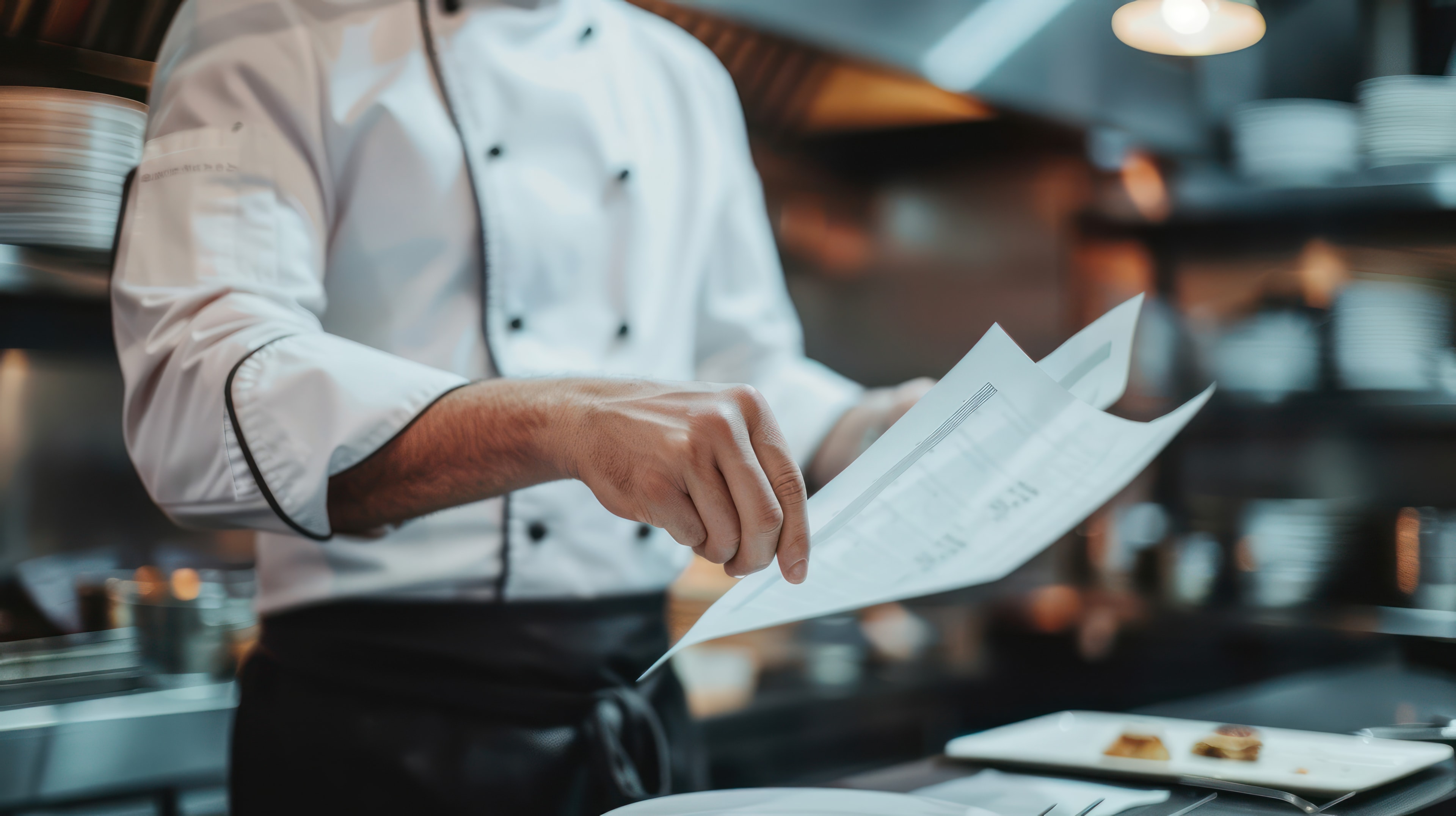
2. Organize into sections
After menu engineering, divide your menu into logical sections. You don't need to reinvent the wheel. Dividing your menu into appetizers, entrees, sides, and desserts is just fine. Depending on your restaurant concept and cuisine, you could get creative with how your dishes are organized, dividing them into categories like vegetables, fish, and meat, or small, medium, and large plates. Or, you can organize your menu offerings into certain dishes like salads, soups, and sandwiches.
As you're mapping out your menu, also decide whether you'll be combining food, drinks, and desserts on one menu or if you'll be providing additional menus. For many restaurants, condensing an entire menu into a single page is a daunting task. Multiple menus can help you avoid overcrowding, but make sure you're keeping them trim so you're not overwhelming guests with pages of options. It's a good idea to maintain a consistent menu design (i.e. color combinations, images, icons, design elements, fonts) across all your menus.
3. Showcase your most profitable items

Once you’ve streamlined your menu, highlight your most profitable menu items. You could list the most profitable menu items first in each category, or add a central call-out box of “favorites” or “house classics.” By placing your most profitable items in the center of the menu, you benefit from “the golden triangle” phenomenon of menu design. When a guest looks at a menu layout, their eyes are drawn to the middle first, then the top right, then the top left — the same rule applies when people view works of art or food photos.
Guests subconsciously order the first two menu options most frequently, so it’s a good idea to start with a high-margin item and place a more cost-effective item last. Placing an expensive option at the start of the list also makes other prices seem reasonable in comparison.
You could also play with different colors and images to bring attention to these heavy hitters. While you want to keep the same fonts consistent throughout the menu, changing the color or bolding the text of more profitable menu items can help grab your customers’ attention. Choosing the right font can also enhance readability and help convey the style and atmosphere of your menu.
4. Identify a color scheme
Different color combinations can evoke different emotions and actions. Keep this in mind as you choose a color scheme. Colors are a key component of your restaurant brand and you'll want to maintain consistency across your restaurant marketing. That means your new menu templates, logo, social media, online menu, and restaurant website should all follow the same color scheme.
Here are some common menu colors, and the feelings they're associated with.
Blue: Has a calming effect. However, it's thought to be an appetite suppressant as there aren't many blue foods found in nature. Because we associate this color with the ocean, it could be a good fit for seafood restaurants.
Red: According to scientific research, this color is most associated with appetite response. It can increase your heart rate and spike your metabolism, increasing feelings of excitement and the urge to eat.
Yellow: Draws our attention, most associated with happiness and sunlight. Combining yellow with red and orange maximizes each color's effect. Depending on your backdrop color, avoid yellow as a text color as it can be hard to read.
Green: This is associated with freshness. Using green elements in your menu can evoke a healthy, fresh vibe that might resonate depending on your clientele.
Orange: Another attention-grabbing color that may have appetite-stimulating effects. Best combined with red and yellow.
Purple: This color connotes luxury, but it can also be an appetite suppressant.
Brown: This evokes comfort, related to items like breads and baked goods. But it's not necessarily appetizing and it's hardly attention-grabbing.
5. Add quality visual elements
Visual elements like graphics, your own logos, and typography can personalize a menu and help focus your guests' attention on certain menu sections or items. Featuring your restaurant logo can reinforce your restaurant's brand and create consistency across guest touchpoints. Graphics or illustrations of different dishes and drinks can put the focus on those items and create variety. If you want a dazzling menu, you're going to have to think beyond black text on a white page.
Visual elements can also be line breaks and outline boxes that signify different menu sections. If you're going to include photos, make sure the photos are high quality and optimized for print. Food photography is tricky to get right, and printing photos on your menu can get expensive fast. Rather than food photos, opting for subtler illustrations (and fewer of them) will ensure your menu design is sustainable over time, only requiring small tweaks instead of gut renovations.
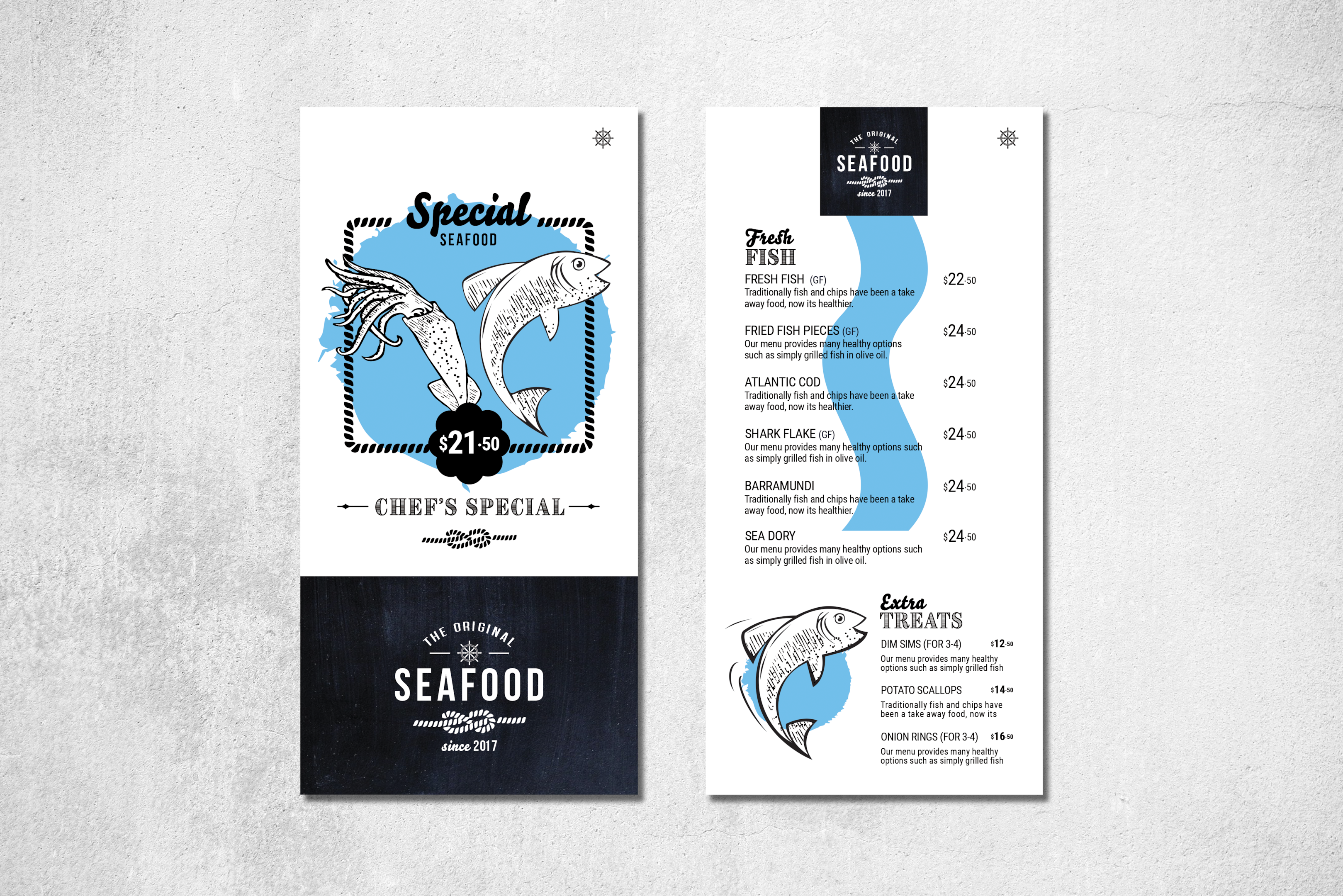
6. Use descriptions to make the sell
Your menu's visual elements should work in tandem with the item names and descriptions. Whether you're taking a minimalist approach or using bold language to tell a story, stay consistent across your menu. There's no right way to do it, just select what makes sense for your restaurant's brand.
If you're opting for more descriptive and evocative item names and descriptions, you have an opportunity to highlight the quality, freshness, and source of your food. Mention local suppliers and farms as well as descriptions like “grass fed” and “organic,” if they apply.
You can list ingredients simply—or you can go whole hog with your descriptions. Here's an example of both strategies:
Simple: Double cheeseburger with bacon, lettuce, and tomato.
Detailed: 100% grass fed Angus beef cheeseburger with aged gouda, thick-cut bacon, butter lettuce, and Fritz Family Farms heirloom tomato.
Cocktail menus are fertile ground for creativity and memorable item names. Naming cocktails after family members, nearby streets, or fun twists on classic names, are some ways to make your menu pop.
7. Decide on materials
Once you've designed your menu, it's time for the exciting part: bringing it into the physical world. As you're looking at printing options, first plot out how often you're planning on modifying your menu so you can opt for a price point that allows for those changes. Think about your concept—what role do your menus play in the guest experience?
If you're trying to create an upscale guest experience, select heavier cardstock and higher-quality printing. Or, for example, if you run a BBQ restaurant, consider using a synthetic stock that is easy to clean, wipe down, and reuse. QR Codes are a helpful tool for menus with frequent changes or restaurants looking to save on printing costs.
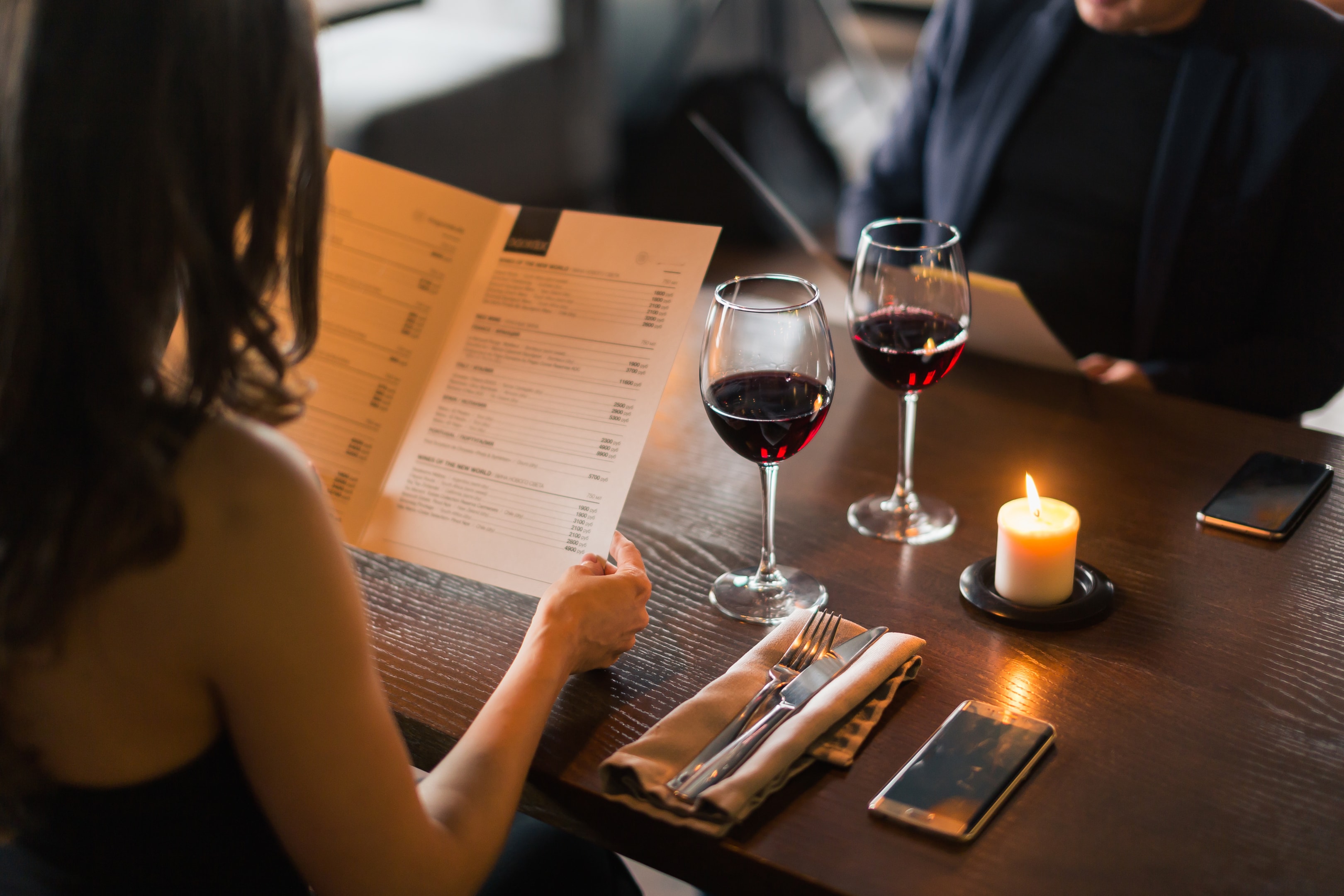
It can be easy to overthink restaurant design. It rings true for how we design menus as well. Staring at a blank canvas is brutal, and professionally designed templates are expensive and out of reach for many cash-strapped businesses. But investing in new menus is worthwhile since they shape so much of how guests perceive your restaurant's identity.
Following this checklist can help you start creating a thoughtful menu design that woos new customers and charms your regulars with new pitches on familiar dishes and a cohesive restaurant brand. It's always a good time for a fresh look. So whether you're just refreshing your layout, or completely transforming your logo, social media, and brand, make sure your menu represents your business well.
Part 3: Keeping your menu fresh and marketing it
Even when you do everything right in the planning and designing phase of creating your menu, you'll need to continually need to make adjustments and improvements.
Continue refining with menu engineering
The first and loudest feedback you'll get on your menu is from your guests themselves. What feedback are they giving your servers? What are reviews on Yelp and Google saying about your dishes? What dishes are getting sent back to the kitchen? What dishes are guests frequently packing up in leftover boxes, indicating your portion size is too big? These are all great queues on where to cut, where to refine, and what to leave alone.
But don't stop there. Feedback from guests is only one part of the story. You'll also want to use sales reports from your restaurant POS to look at the hard numbers. Use this reporting data along with a menu engineering matrix to modify your menu for more sales.
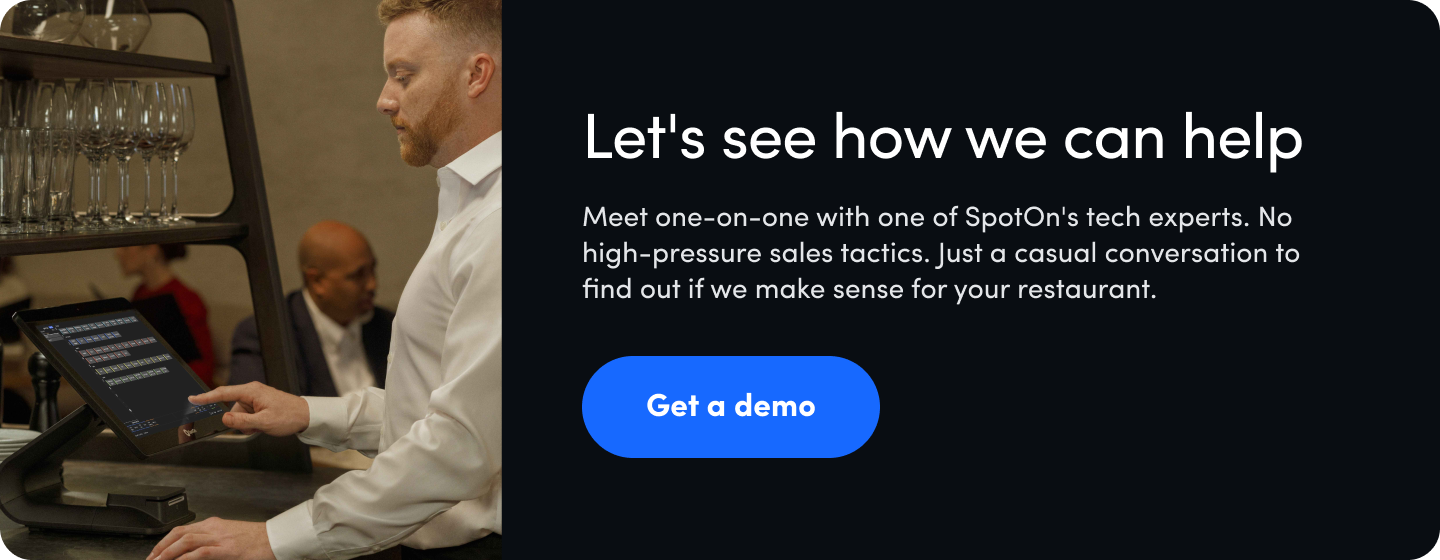
Marketing and promoting your menu
Your restaurant menu isn’t just a list of dishes — it’s one of your most powerful restaurant marketing tools. A stunning menu can do more than just tempt taste buds. It can attract new customers, build a loyal following, and set your restaurant apart in a crowded market. But to unlock its full potential, you need to market and promote your menu with intention and creativity.
Start by ensuring your menu looks as good as your food tastes. With today’s menu maker apps and restaurant menu makers, you don’t need advanced design skills to create a professional menu that reflects your brand and cuisine. Choose from a wide range of free menu templates or professionally designed templates, then customize them with your own logos, color combinations, fonts, and high quality images. Whether you want a classic look or something bold and modern, there are many different options and design elements to help you create custom menus that fit your restaurant’s identity. You can even add your own photos and adjust to a custom size, ensuring your menu is as unique as your business.
Once you’ve created your perfect menu, it’s time to get the word out. Social media is your best friend here — share mouthwatering shots of your menu items, highlight seasonal dishes, and use relevant hashtags to reach new customers. A menu online is easy to update and share, and you can use QR codes to link directly to your online menu, making it a seamless experience for guests to browse and order. QR codes can be printed on table tents, flyers, or even your storefront window, giving customers instant access to your latest menu offerings with just a few clicks.

Don’t forget about the power of print. High resolution files let you print stunning menus, table tents, and brochures that showcase your menu in style. Use a blank canvas or menu template to easily create print menus that look sharp and professional, whether you’re handing them out in your restaurant or distributing them in the local community. With a one stop shop menu creator, you can design, print, and update your menus as often as you like—perfect for when the seasons change and you want to feature new dishes or promotions.
The key features of successful menu marketing are flexibility and consistency. Update your menu regularly to keep things fresh and exciting, and use a drag and drop menu maker to easily create new versions as your offerings evolve. By keeping your branding, color schemes, and design elements consistent across all your menus—online and offline—you’ll reinforce your restaurant’s identity and make a lasting impression on your customers.



